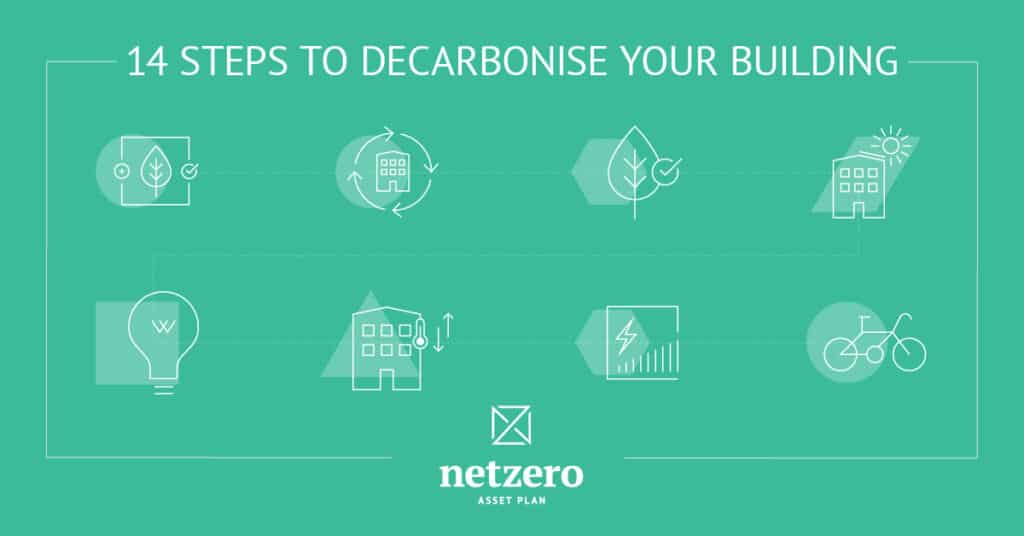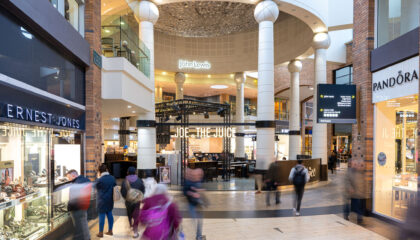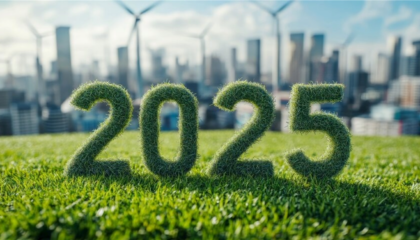
With the built environment contributing around 40% of the world’s total carbon footprint, according to the World Green Building Council, developers and property owners must not be daunted by the Net Zero buildings challenge.
Rather, they should take proactive, systematic steps towards targeting carbon reduction for all buildings in the face of climate change contributing to the Paris Agreement goal to limit global warming to well below 2, preferably to 1.5 degrees Celsius, compared to pre-industrial levels.
See how Workman can support your journey on the Net Zero pathway.
Create a Net Zero philosophy
Developers and property owners need to steer clear of greenwashing. Their goal must be to reduce the carbon emissions of real estate and drive towards Net Zero in the built environment before costly regulation and enforcement take over.
Considering cost-effective solutions at the outset of a project, as part of an objective and considered briefing stage, will enable significant progress. Moreover, they take into accountthe wider lifecycle benefits arising from both construction and in-use operation. This can create a more resilient, and therefore more valuable, asset in the long term with more evidence now supporting the value of Net Zero buildings in the drive to reduce global emissions and limit climate change.
There must be a shift towards a more proactive mindset to achieve net zero carbon buildings, along with a re-evaluation of the success of projects. Real estate requires solid real-world case studies, with added data and scrutiny on how a building performs over its whole lifecycle.
But this doesn’t have to cause paralysing levels of bureaucracy or procrastination.
At Workman, we collaborate with clients to create and implement bespoke Net Zero Asset Plans to meet the corporate carbon emission targets and those set by the government. Our methodology for each Net Zero roadmap is a unique journey to creating net zero carbon buildings, providing recommendations and direction for reducing whole-life carbon, while also collating existing data or identifying gaps to create the starting point for achieving Net Zero carbon. Our approach is also consistent with the UKGBC’s Net Zero Carbon BuildingsFramework.
Here are 14 practical steps to take when moving towards carbon reduction in buildings, both embodied carbon* and operational carbon**.
1. Refurbish and re-use*
By element, the largest contributor to embodied carbon in the built environment is the substructure and superstructure. This accounts for 65% of a typical office, according to the London Energy Transformation Initiative. So, when considering redevelopment options, a comprehensive understanding of these aspects is necessary. Accordingly, you can understand whether you can develop new designs from the existing frame.
This avoids demolition waste and the introduction of carbon into new structures, as well as the carbon impacts of transport, in addition to the further benefit of shortening construction programmes. Consequently, you’ll need to weigh these aspects against existing design life and condition, warranty position and dimensional requirements.
However, the potential carbon reduction from reuse and refurbishment could prove significant, as opposed to simply creating more new buildings.
2. Keep supply chains short*
Transport accounts for almost 25% of Europe’s greenhouse gas emissions. This is the main cause of air pollution in cities, according to the European Commission. Reduce transport carbon by considering how to procure materials and focus on local supply chains to the construction site. Transportation of materials from the manufacturing facility to the building site adds to the account of any building.
By buying from local sources, the emissions during transportation fall, and you support the local economy. However, reducing transport distance alone is not always enough to cut embodied carbon. The mode of transport is also important as transport by road is far more carbon-intensive than transport by rail. In turn, rail is more carbon-intensive than transport by sea.
3. Harness the circular economy*
Select suppliers who operate cradle-to-cradle operations, taking back existing material for re-use into a new product and thereby advancing Net Zero buildings within the construction industry.
It’s estimated that 40% of global carbon emissions result from the built environment. But less well-known is that a significant percentage of emissions result from the beginning of a building’s life, according to a 2014 paper from the UK Green Building Council. The processing of construction materials can account for anywhere between 30% and 70% of a building’s lifetime emissions. Therefore, for a developer to ensure its building is carbon neutral, it must be in a circular economy.
When possible, design the building to be easily dismantled in sections. Thus reducing the impact on other elements when extracting the building component, and avoiding additional wastage.
4. Reduce waste on-site by using off-site manufacturing*
Since the embodied carbon within any building element includes its material footprint and the waste generated during its construction, prefabrication under controlled conditions allows the reduction of waste and its associated carbon emissions.
Similarly, modular elements permit the efficient use of materials and facilitate the off-site manufacture of these elements. The hotel, residential and student sectors use modular off-site constructed bathroom pods routinely now. However, the transport factor may detract from carbon reductions and energy efficiencies made, as prefabricated elements could be made in off-shore locations.
5. Find flexible finishes to deliver Net Zero buildings*
Finishes have many purposes, usually affecting the acoustics and thermal conditions inside living spaces. Also, finishes provide an important aesthetic function that can affect users’ overall wellbeing. However, they are among the elements that have the shortest lifespans in commercial buildings. Internal spaces can be reconfigured frequently. In short, it occurs usually by removing or re-introducing partitions and flooring, and changing the ceiling layout.
The aggregated impact of replacing these elements several times during the lifecycle of buildings can have a significant overall impact on waste and carbon footprint. So, finishes should include low carbon building materials, and allow for the easy recovery of those materials for recycling or reuse. It’s important to grasp the requirement for finishes.
For example, opting for an exposed services approach allows the omission of suspended ceilings. Thereby reducing the initial carbon impact as well as throughout the life cycle during maintenance and refurbishment work. This also makes services more accessible for maintenance and alteration.
6. Careful product selection; naturally*
Selecting natural materials, those with low energy consumption during manufacturing processes and higher recycled content can make a big difference. First, you only count the carbon impact from raw material extraction the first time you process the material.
After that, the recycled material includes only the impacts from its reprocessing. This strategy has the added value of keeping materials inside the economy and lowering the pressure for extracting virgin materials. Meanwhile, it also reduces negative financial and environmental factors around waste and landfill.
7. Cut your building’s carbon footprint in half with timber*
Developers are starting to recognise the sustainability credentials of timber frames, versus traditional steel and concrete.
Indeed, using timber takes careful consideration. But some industry experts estimate that its deployment cuts the size of a building’s carbon footprint in half. That’s because wood is the only construction material that sequesters carbon. Yet it’s worth remembering that adding finishes to protect wood can decrease its overall impact.
Buildings made from timber can also make for more appealing environments, with a connection to nature. Some studies suggest that exposed interior wood could have psychological benefits, such as a greater sense of wellbeing for building users.
8. Recycled flooring for more sustainable buildings*
By choosing to replace damaged raised access flooring with recycled panels, buyers can be encouraged that they are not only getting the best bang for their buck. But also moving towards a more sustainable project path. Panels may not be consistent in their surface finish. Often, we source and reclaim from multiple strip-out projects nationwide. However, you can alternatively purchase materials under full warranty that are usually suitable for carpet overlay.
Another approach to flooring, suitable to more comprehensive refurbishment projects, is cross-laminated timber (CLT). Production of CLT results from softwood timber sections that lay across each other at right angles, before industrial lamination.
Construction tends to be quicker and cleaner than traditional builds, with a lower embodied-carbon footprint. It’s also a lighter material, resulting in a potentially lighter structural frame and foundations. However, it requires consideration from an acoustics and fire strategy perspective.
9. Use solar and green roof to reduce a building’s carbon footprint**
While access is available during external maintenance work such as roofing, solar PV is also an option, meaning less reliance on fossil fuels, and thereby helping to reduce purchased grid energy by using local on-site energy. Carports could also help, although these often have longer payback periods due to the additional support structures needed.
When used in combination with green roofs, the operational energy efficiency metrics of solar panels can improve. Biodiversity at the site can also be improved by PV panels providing different wildlife habitats. By adding areas of shade, the number of species that will colonise the roof increases, since many plants and animals, such as insects, prefer shaded areas. Combining solar panels with green roofs can therefore increase the biodiversity of the building, while providing free operational energy generation.
10. Fabric improvement to achieve Net Zero carbon buildings**
For existing properties, planned refurbishment work often presents a valuable opportunity to specify cost-effective improvements that increase the thermal insulation of a building, moving closer to the goal of Net Zero carbon buildings so that fuel and power are conserved, and reliance on fossil fuels is reduced. This improves energy performance, overall building performance and therefore carbon reductions.
For example, this could be the time to reassess insulation to walls, roofs, floors, airtightnessand the density of the fabric, to help limit heat loss or solar gain, and move further towards achieving Net Zero carbon buildings. Roof re-covering can incorporate additional insulation, and where more extensive façade-replacement work is already planned, the performance and extent of glazing could be considered and evaluated within the context of fabric improvement.
Challenging project teams to deliver beyond statutory compliance will ensure technology and new skills are quickly developed.
11. Retrofit heat pumps**
Heating and cooling of a building can be made more efficient by removal of gas-fired systems and the introduction of an energy-efficient plant (air/water source heat pumps), heat recovery to ventilation, natural or mixed-mode ventilation, solar thermal hot water for shower facilities, revisiting design standards around acceptable winter and summer internal temperatures.
Alternative heating and cooling solutions including air- and water-source heat pumps can contribute significantly to carbon savings, in combination with natural or mixed-mode ventilation to reduce the energy demand from full mechanical ventilation systems.
Of course, switching to renewable energy sources can also make a huge difference.
12. A light-bulb moment**
The environmental and economic savings that come from a total LED switchover are by now well-recognised in the quest for Net Zero carbon buildings and decarbonisation. Plus, they’re commonplace; with LED lights often ten times more efficient than the bulbs they replace. Even further efficiencies can be made by using daylight-dimming options where there is good natural light and smart technology to ensure that only those areas with occupants are active.
13. Get smart – create intelligent buildings**
Intelligent buildings monitor energy use and identify where improvements can be made, ensuring energy-use gaps are identified quickly. Workman’s smart building platform IBOS (Intelligent Building Operating System) is now installed across more than 5 million sq. ft of commercial property. It works by utilising information gained from existing building services in real time, gathered remotely, and feeds into a dashboard showing energy usage 24/7/365.
IBOS interfaces with existing buildings and new buildings both large and small, including those that do not have a BMS in place. This is unique compared with most other providers. The Workman platform is a cloud- and site-based solution, with a simple configuration to:
– Monitor central plant systems;
– Detect failures in M&E systems without the need for an on-site investigation;
– Feed data into address Net Zero ratings;
– Reduce energy bills, and;
– Reduce the carbon footprint of the building.
14. Take the green line**
Environmental and economic issues have prompted many to reconsider how they travel to work. When aiming for Net Zero carbon buildings, refurbishment and retrofit can be used as an opportunity to consider the addition of amenities to support cycling to work, electric vehicle charging, and battery storage.
In this way, we encourage occupiers to:
• reduce carbon levels, and;
• employ sustainable active commuting options for occupier wellbeing.
Embodied and operational carbon – what’s the difference?
*Embodied carbon: carbon dioxide emissions from making a building – as distinct from using it – are embodied carbon. This covers greenhouse gas emissions from the energy and industrial processes used in the processing, manufacture and delivery of the materials, products and components required to construct a building.
**Operational carbon: the emissions of carbon dioxide and other global warming gases during the in-use operation of a building, such as operational energy use.



